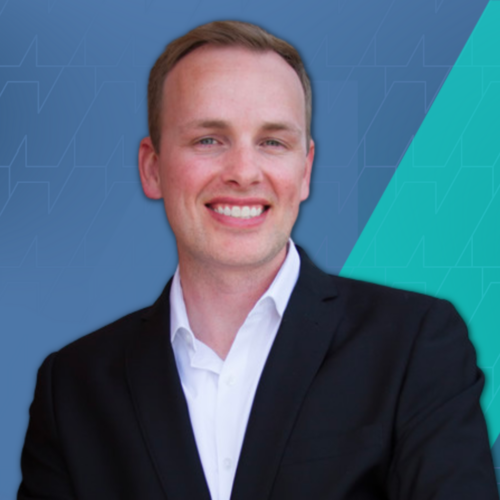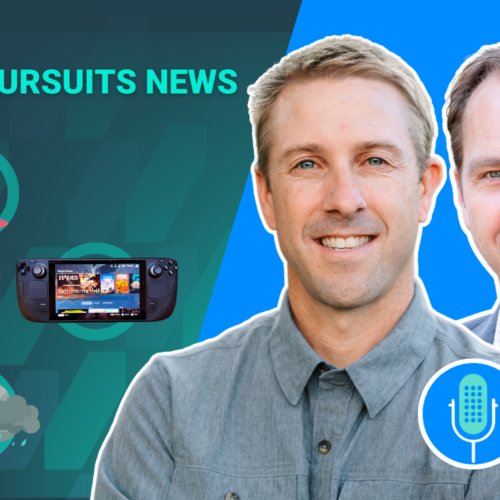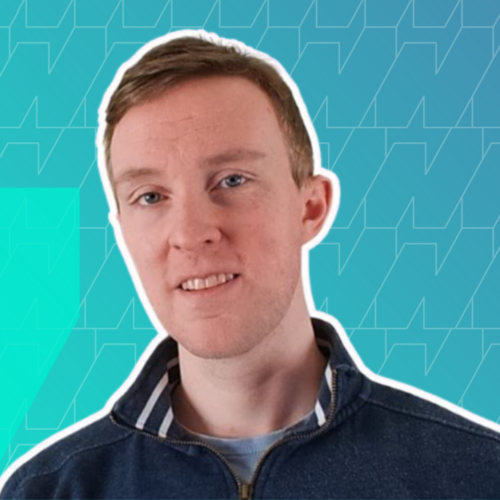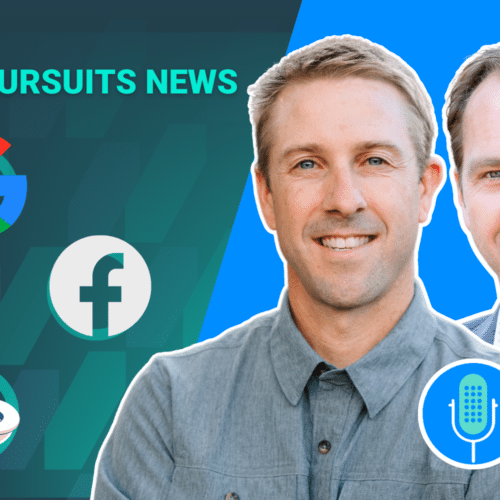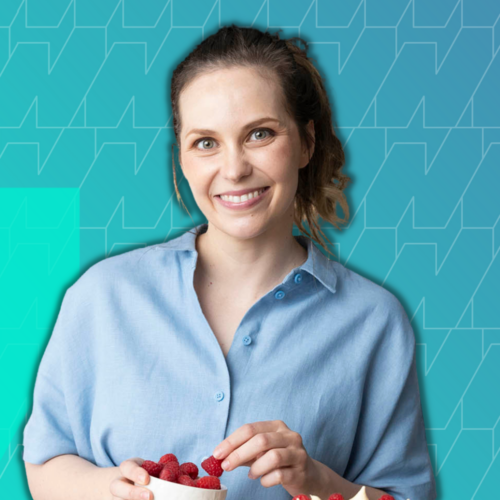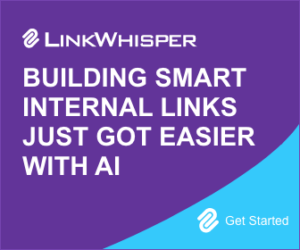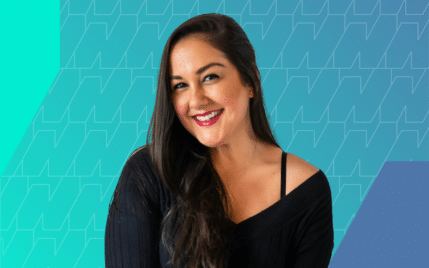Podcast 167: How Ryan Kulp Makes Micro SaaS Acquisitions and Has Grown from $10k to Over $100k MRR
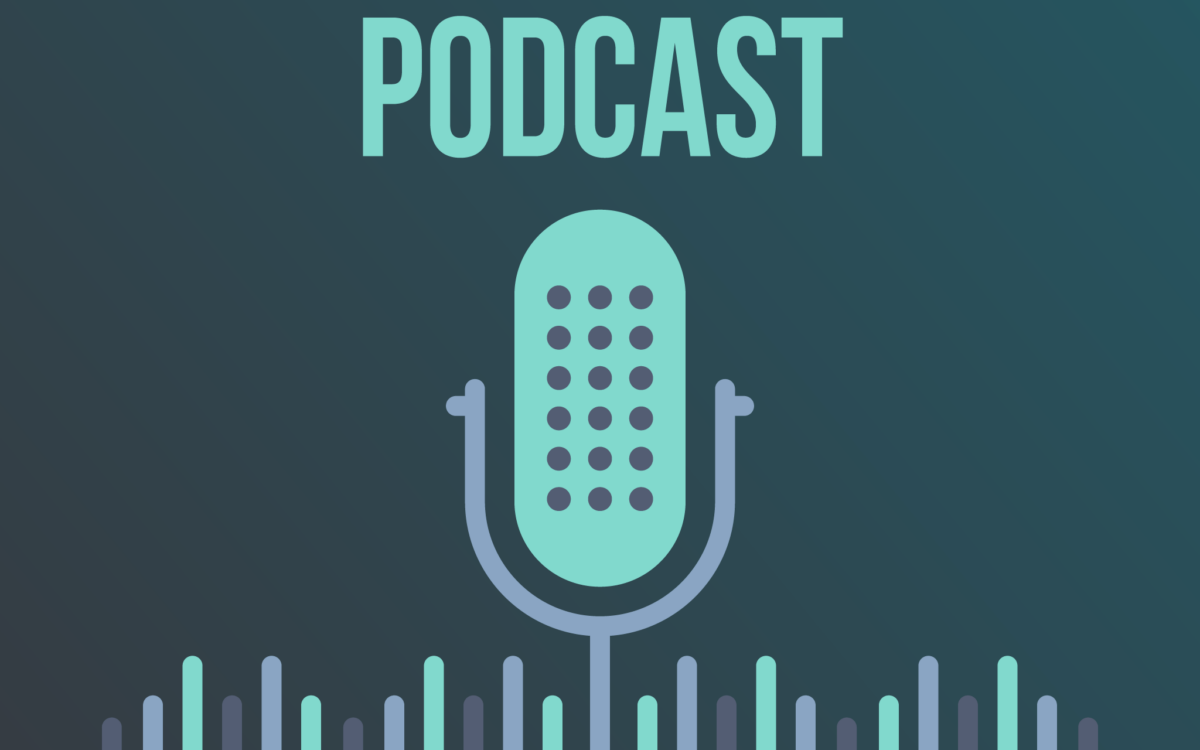
When you buy something through one of the links on our site, we may earn an affiliate commission.
In today's podcast episode, you will hear an interview I conducted with Ryan Kulp from both MicroAcquisitions.com and ForkEquity.com.
Ryan started acquiring small SaaS applications about 3 or 4 years ago. During that time he has made 10 acquisitions and grown the revenue of his entire portfolio to over $1.5 million a year. (You can see his entire portfolio right here).
His very first acquisition was Fomo.com that was generating about $10k Monthly Recurring Revenue (MRR). He has since grown Fomo to about $100k MRR.
During the interview, you will hear the story of Fomo, Cross Sell, and other apps that Ryan has purchased. In addition, you'll get all his insights on why acquiring small SaaS applications is such a great business model.
Overall, listen in to hear how Ryan finds companies to acquire, how he gets money to buy them, and then how he grows the revenue of the businesses purchased.
If you ever want to get in touch with Ryan, you can find him on Twitter right here.
Full Transcript:
Spencer: Hey everyone, welcome back to another episode of the Niche Pursuits Podcast. I am your one and only host, Spencer Haws from nichepursuits.com. Today, I'm really excited to have a guest on the podcast. His name is Ryan Kulp from microacquisitions.com, or forkequity.com, or one of his products is fomo.com, and he's got lots more. What are we talking about today? We're talking about micro PE or micro private equity, micro acquisitions.
Over the last 3½ years or so (since 2016), Ryan has made 10+ acquisitions in the app, the software space. His first acquisition was fomo.com. It’s now fomo.com. He’ll let you hear the story of that just a little bit transitioned. A Shopify app that gives notifications on Shopify stores when buyers check out and buy something. It’s a social proof app that shows when people are buying and can increase conversions. He's taken that from making around $10,000 a month in monthly recurring revenue to over $100,000 a month in monthly recurring revenue.
He shares a little bit of how he did that, but overall, we talk about the bigger picture of all of the acquisitions, the business model behind that, how and why he's acquiring so many businesses, and how he does it through sometimes creative financing, not always. Sometimes it's all cash offers, but other times, it's creative financing so he doesn't need to put as much cash down upfront.
Beyond just talking about his acquisitions and what has worked well to grow those, he talks about his own company, how he structured that in terms of employees, what's working well, how much time he has to put into these acquisitions, and so much more. I find it a really motivational and inspirational podcast episode myself. Talking to Ryan, he's obviously a very smart individual.
He's been very successful at what he's done, but what is really interesting is that before 2016, before his first acquisition of fomo.com, he was just an employee somewhere else. It’s not like he's been running and growing businesses on his own for a very long time. In a matter of three years, he's built a portfolio with an annual recurring revenue of over $1.5 million, which is quite significant. I hope that you find it inspirational and motivational as well. If you want to follow along with Ryan, you can do so over and microacquisitions.com. With that, it's time for the interview.
Hey Ryan, welcome to the Niche Pursuits Podcast.
Ryan: Thanks for having me, Spencer.
Spencer: Yeah, it is a great to connect, great to have you on the podcast. I was introduced to you by John Gillam over at Authority Website Income. It seems like you just came out of the woodwork. We had never crossed paths before, but you've been building things for a long time, right?
Ryan: Yes and there's actually a lot of me’s that are about to come out of the woodwork because for awhile, the concept of owning a handful of businesses, was limited either to larger private equity shop, so millions, tens of millions, billions in an asset value or niche content websites that obviously you're very familiar with. The concept of running multiple software products was breaking the laws of physics, like it's magic tricks, because people are struggling to run one software company, how could you possibly have the audacity to think you can work on multiple, whereas content seemed a little more scalable.
Now, what we're seeing are people with a portfolio of apps and we’re able to do this because software no longer means go big or go home. You don't have to invent the spreadsheet anymore. You don't have to build marketplaces. You can build single-player, small utility, people call them micro SaaS tools. Now suddenly, software looks a lot more attractive. It looks a lot more like a niche content site and you can scale and own multiple copies of them.
What I've been up to a lot of in the past few years is working primarily on fomo.com, but that was an acquisition. My palate was wet in 2016 when we bought a tool called Notify, turn it into Fomo. Ever since then, we've bought around 10 other small apps, Fomo competitors to other Shopify apps. We've sold Shopify app. We've bought an ecommerce store. We've bought a niche content site that talks about ecommerce stores. We've really been trying to build this ecosystem.
Finally, about a year ago, we put a bow on all of this by forming a vehicle called Fork Equity that now is the parent entity to all of those assets. That's me in a nutshell over the last few years and why our paths are converging and why there are a lot more of me’s converging with the content folks.
Spencer: Yeah, I agree. It's an interesting perspective, an interesting development, and sort of, I don't want to call it the startup world because I don't view these as startups in the terms of the tech crunch, or the raising venture capital, or the “if you don't grow by some multiple every year you're a failure, or considered a failure.”
We're talking about small, profitable businesses that are cash flow positive. You don't have to have a home run. These can be base hits and make all of the owners a lot of money. Then, if you have a home run, which we can talk about Fomo, but is doing very well, even better, right?
Ryan: That's right and a key ingredient to that, though, is like you said, to have a base hit and not a home run. It’s not so much about a philosophical preference to think all of us want a home run. If Fomo could become a unicorn, why would I go for that? But Fomo is not designed to be a unicorn and Fomo isn't endeavoring to be a unicorn.
Again, the key ingredient is that we're bootstrapped. If I raised capital, I would have to, as they say, swing for the fences. I would have to. In fact, if I raised capital for Fomo, for example, it's possible that some of my investors would be not happy right now with our performance. Not because it's a bad company, but because our year over year growth rate or month over month compounded growth rate wouldn't be an all-star their portfolio.
Profit isn't really that interesting when you're venture funded because the real cash infusion comes at time of exit, not from optimizing margins. On the front end, you have to decide as an entrepreneur, “Do I want to swing for the fences? If so, I raise capital. If I raise capital, I can't grow a steady, linear cash flow positive company.” That's not really interesting to my stakeholders. It’s a paradigm shift. Whereas, if you want to have a portfolio of projects that hedge and diversify for you, you do want to look at margins on a regular basis and not just the top line. You need to make different decisions.
For example, I also couldn't possibly work on more than one project if I raise venture capital. That would be a huge no-no. I wouldn't even be able to go on vacation now. I don't go on vacation anyway, but you understand I'm saying is that investors are not interested in hearing about your other cute side projects. When you go the bootstrap route, you have that ability. However, I will mention, though, that it's a big decision because I think and they say that the first million is the hardest. That's the entrepreneur speak, but it applies in everything.
The first $1 million your company makes is the hardest even if none of that is profit. The first $100,000 is harder than the second $100,000. A part of going down the bootstrap route where you can build a portfolio, you can focus on margins, you don't have to work on only one thing for 7-10 years and hope that you sell to a strategic buyer, what that really entails is that you are willing to go through the obstacle is the way. You're willing to go through that early stage where most people get, I want to use all these fake war phrases like slaughtered, but where most people get bummed out or knocked out.
They think to themselves, “I can't do it,” or “No one can do it. Therefore it can't be done.” and then they get back and head on a treadmill of, “Let's raise venture capital and try to sell to a strategic.” I've found that once you do these things once, you don't believe that you can do something until you do it once, and then, “Ah, I figured that out,” and you just develop an addiction for repeating that process over and over again.
Spencer: Absolutely. I'm curious about your background a little bit. What led you to this decision to going to micro acquisitions, this micro PE? What were you doing before? Were you in either the finance world, the prep private equity world or were you a software developer? If not, how did you ever come to buying software companies?
Ryan: The way I got into this in one word is serendipity, to be honest, and luck. I was in quasi finance but still startup entrepreneur tech world. I was working at a venture capital fund, actually, in San Francisco in 2015 to 2016. Early 2016, I recently moved to San Francisco, so I was switching over all of my credit cards to online subscriptions and services. I had to change my address from my former New York apartment. One of those credit card alerts I got, that said, “Log in you're going to lose your subscription,” was for a beef jerky subscription box that I subscribed to.
I logged in to update my payment method, my new zip code and I got hit with this notification that someone just bought a subscription to beef jerky five minutes ago, something like that. As a marketer, I thought, “What the heck is this sorcery that I'm seeing right now?” and inspected the HTML of the page and inferred it was a tool called Notify. Actually, acquisition was not in my mind. I wasn't even familiar with the concept other than this is something startups want. They want to be acquired. I reached out to the founder and said, “Hey, I work at a VC fund. Are you interested in raising capital?”
He actually happen to live in San Francisco and I said, “I'm in San Francisco.” We’ve met, talked about it and he said, “No, I'm actually not interested, but I am willing to sell it if you know anyone.” I thought out, “Okay, bummer.” If you're in VC and you're trying to get a deal done and the person says, not only that they don’t want a raise, but they're actually disinterested in the product, they want to divest, you usually run and you don’t follow them. In passing, I happened to mentioned it to my buddy, Justin Meyers. Maybe we were at dinner or something, a night or two later. He said, “Oh, maybe we should buy it.”
Again, the thought hadn’t occurred to me. This was not an independent thought, I'd certainly give him credit for this and said, “Okay.” Long story short, fewer than 30 days later, we owned the company, him and I. That's how I got into it. In fact, I stayed working full time at the VC fund and then after quitting the VC fund, in the summer of 2016, I joined another company full-time.
I joined one of our portfolio companies. Fomo remained this side project that I worked on nights and weekends. I’d worked on with Justin. We would order Sprig—rest in peace. We would order Sprig food delivery at our co-working space in Selma. I didn't go full time on Fomo until we were near $30,000 MRR. I kept it as a part-time side project.
Spencer: That's fascinating. You really stumbled into it. Serendipity, as you explained, which is really interesting. Let's talk about the Fomo deal just a little bit more. How did you pay for it? Did you just buy it outright, 100% cash or what was the deal structure there?
Ryan: We have this understanding with our original seller to not talk exact numbers, but everyone can get the spirit of the deal with fewer pieces of information. Essentially, the seller doesn't want cash upfront. At the very beginning, Justin and I took this approach that, “Hey, we don't know if we can buy it. It's a cool business and it should be bought. It's viable to be acquired. Worst case, we could try to very quickly broker sale with someone else we know who has more money than us.”
We weren't even sure if we would buy it. We just thought we could be a part of this transaction because we’re both living in San Francisco, we both know rich people, we both know people who believe in us who could fund it. I'm sitting there at a fund that was interested. Actually, my fund was interested in acquiring the tool and having me run it as an operator. We had access to capital, but we were not independently loaded to buy and get this deal done. Again, more serendipity, we began talking with the founder and we made an offer.
The first kink, not really kink, but it reduced the cash requirement, is the founder, which was really interested in our vision for the product, knew we were both marketers. I think he looked into us and he wanted to retain some equity right there regardless of what the valuation is. Let's just use a simple number. Let’s say the valuation was $1 million. If he wants to keep 10%, we’re now only on the line for $900,000 or less, depending on how you want to do your […]. That helped.
The next wrinkle came when shortly after we had ballpark valuation, we made an all-cash offer. Our perception was two-fold. First, he won't accept this just because things never work out. You make an offer, as you get older, you realize things never work out. The second half of this offer was that we would figure out how to pay him. We were very confident that he accepted, we would go to our rich buddies and get the deal done. We made the offer and he accepted but on the condition. Not only he wanted to retain equity, which reduces the cash position requirement, but he said that it was better for his situation if he got paid over time.
When that happened, it was like, “Huh.” Now we have another attribute that we can use to our advantage. Once you're paying someone over time, suddenly having all the cash upfront doesn't matter. In fact, it’s a waste because if let's say we got a loan for the full valuation to then have all of it upfront and not need to use it, means were paying interest on money that sitting there. Suddenly, we didn't have to go to our rich friends. We're actually able to get creative with the financing deal structure.
What we ended up doing, that I didn't even know was the term for it until later (and this is embarrassing, but this is just again the story), essentially we ended up doing seller-side financing. But that wasn't the plan going in. The plan going in was we make an offer, we give him cash and it got to buy him wanting to retain some equity that reduce the cash and then saying, “You know what, if I get paid overtime, that's better.”
We figured out a fair number, a healthy number when you do loans, whether it's directly to a bank or directly to the seller in this case. You come up with a healthy number that you can “service,” that you can afford to work with every month and still grow the business. We came up with that number. It was around what the revenue was at the time, that was a monthly installment plan, and then we just got to work.
Month one, month two, month three, month four. Our revenue went 39 months straight increased. Maybe there was one or two that we would break even or we're plus-minus $200, so it breaks even. Otherwise, 39 straight months of growth and for the first 20 or so, every penny went back into the business. Suggesting, I didn't pay ourselves. I mentioned we ordered food delivery from Sprig. That was the only expense we cut on the business that wasn’t developers or designers. That’s the only expense. Maybe two coffees.
The day we launched, we spent $50 at Mazarine Cafe on Market Street in San Francisco. We sat there August 8th, 2016, August 9th on product hunting and bought a bunch of coffee, and that was it. That's also why I had to keep that full time job. We had this company doing $15,000 MRR, then $20,000, then $21,000, then $22,000, just really, I don’t want to say a slog like it was negative, it was a really positive time, and I had fond memories of that ramp up period. It's easy to look at a company’s MRR and think, the founder must be rich when actually the founder is making $0.
That was the process. We're definitely not mid-stage. Mid-stage could be $10 million plus ARR, but when you go through the really early stage to a stable revenue, whatever that number is for you, where you have predictable revenue, you have team members and processes in place, it's addicting. It is for me. Then, you just want to do it again and again. As we’re growing, we're seeing a competitor pop up and we say, “Hey, we're interested in acquiring you guys,” and they say, “Wow, okay cool,” they're familiar with us. They know that we're like the bigger guy, so we bought them.
We did it to another competitor. We bought them. We found a niche content site that wrote contents just for our audience. We bought them. We just kept doing this and then suddenly not only competitors are interesting, anybody who's got a B2B marketing Shopify app is interesting. Then we bought Cross Sell. We started building Shopify apps, and then we sold the Shopify app.
It became a thing. There was no master plan early on, but after you do a few deals that have a hub-and-spoke commonality between them—in our case, that's B2B marketing apps, widgets, Shopify, ecommerce-specific, those are the attributes—once you zoom out and you look backwards at what ties together your portfolio as you build it (like we did it again on the fly), then you go, “Oh okay, this is actually my thing,” I had to have an intervention with myself and realize I excel at B2B marketing SaaS products. I excel at that. I do well helping ecommerce stores with conversion rate. I do well at that.
But if I told myself that in 2016 or even 2017 or even early 2018, that that's my career strategy or something, or that's my specialty as a marketer, I think it would have fallen apart or it would have felt limiting. Instead, what we did was we just tried a bunch of things. We bought other apps that aren’t doing as well, or they're not growing as fast, and guess what, those apps are not B2B marketing widgets or ecommerce.
Again, looking backwards, we were able to determine our stick and now when we slap that on our website on Fork Equity and our emails, our communications with potential partners, and investors, it's restricted our deal flow to only look for a couple types of businesses. Suddenly, everything started clicking. Once that happened, we realized we have to share what we've learned. That's what lead us to the course and that's what lead us here today.
Spencer: Absolutely. You really moved pretty quickly. You've made 10 plus acquisitions you said. If the first one was the second half of 2016, really in three years to make 10 acquisitions, that's moving pretty quickly I would say.
Ryan: I guess so, I hope so. When it's a smaller company, you can afford to screw up. So far, everything we've done has been fine. Our worst performing product is called Cookie Assistant. It’s a cookie consent plugin and it's a great product. It was okay when we bought it. I think we've made it great and that's no offense to the original founder. They have another really awesome product they're working on.
We bought a side project from someone. Now ours make some money, but it's never going to take off. There are dozens of cookie plugins. We’ve gained and lost ranking for organic keywords. We’re never going to try to advertise either for a cookie plugin, but we bought that in the wake of GDPR.
When we bought it, it was pretty hot. It was getting a lot of signups every day prior to end of May 2018 was when GDPR came into effect. So, I don't regret it. The timing was right on. Again, it's a good product. We use it on the site itself, but that's just one example where it’s straight from our niche and it hasn’t worked out as well. The main thing is we were able to move quickly because these were smaller deals. Now, an even bigger deal looks like a small deal because we've learned a lot and we have more resources at our disposal.
Spencer: Are you typically following the same type of structure if you can and what would make an acquisition? Are you using seller-side financing, using other tools, whatever you can use to not have as much cash upfront?
Ryan: I try to be structurally agnostic, actually. We've done some all cash, we’ve done a mix of debt equity hold back, we've done performance. We've done all of it, I guess. It's probably okay to have a preferred structure, but if you have a preferred structure, you should know why you prefer it.
For example, we know a fund that prefers cash and that's for two reasons. (a) They raise the fund so they need to deploy the cash or they'll get angry investors asking essentially for interest because their money is sitting in the account. (b) They prefer to pay cash because they've witnessed firsthand the buying power of paying cash upfront.
They understand that a founder who wants $1 million for a business is maybe okay to take $800,000 when they say, “We can pay you next Friday.” That's an age old strategy. Just stick to things that don't change about the human psyche of wanting short-term gains and wanting instant gratification. They've found a niche there with using cash in that way.
What we found is, people that are selling businesses to us, they're often their side projects. If it's your side project, it means it’s not your primary source of income, which means you don't really need the income coming from it, which means you don't need to take a haircut on the evaluation, because you're already doing fine with your income from your other projects.
We've not found cash to be some huge motivator. People seem to be more interested in maximizing evaluation. When you do that, that lends itself well to paying over time. Each deal structure has an angle by which it becomes the most valuable to the seller and buyer. It just depends on what kind of businesses you're buying.
Spencer: That makes perfect sense. I do want to take a step back and give people a sense of how well your business is doing overall if you can. Whatever you're willing to share, I know that Notify or Fomo was your first acquisition and you shared some numbers there. Either share how well that business is doing, or if you're willing to share overall portfolio numbers, I'm sure people are curious to hear about that.
Ryan: Sure. All of the above is cool. Some highlights, Fomo’s best month at the peak of our 39 months rise was $154,000. That was not all MRR, though, or I should say that wasn’t all recurring revenue. Our best month with recurring revenue was around $112,000. That was earlier this year. And now it’s been hovering around $100,000 MRR. That's Fomo.
Our next best weight in the portfolio is Cross Sell. Cross Sell is just about to hit $30,000 MRR. We see a long future actually for Cross Sell, almost exclusively in the revenue department versus product. Whereas Fomo, I could see it going both ways. There's a lot of product to build, a lot of revenue opportunities. With Cross Sell, we've made the products so much better since acquiring it, but we've been held back by these legacy users paying $7 or $8 a month.
What we've just been doing at Cross Sell is like in upgrade campaign which if you're building a business on Stripe, this is incredibly easy to do. You send users a couple of emails, letting them know that your pricing is changing, and you write a migration script that bumps everyone up after some reasonable amount of time. Then you refund people who claim they have never gotten emails. With the Shopify app, you cannot do that. People have to go back through a […] payment consent flow which is a lot of friction.
Even if someone's happy to upgrade, for example the marketer who uses your tool, can't do it. On Shopify, only the owner login can accept billing charges, even if their invited users are admin status. There's a couple of quarks there where Shopify kind of treats you like children and I'm not happy about that, because you'll buy a Shopify app that’s got, in the case of Cross Sell, a couple of thousand users that signed up in 2015 who are paying $7-$8 a month. You look at that and you go wow, if we can increase the value of this product, we can double the price and essentially double the MRR. Obviously, there's going to be some cannibalization and churn, but in other words, that's a big opportunity staring you in the face.
Well, it doesn't work that easily with the Shopify app. We did actually a small batch test in the last three weeks or so. We put together a cohort of users who are logging into the app all the time yet they're on a plan that was three years old. This is the most likely people to upgrade. They use the tool very heavily. They're power users. They're paying $8. They witnessed us increase the value of the product tremendously since we bought it in 2017.
We've been hacking on it for two years and we decided to put them through a campaign (about 100 stores) and tell them, “Hey, we just need to upgrade you to continue investing in the product. You’ve seen what we've done with the last couple of years. Click here. Click here.” In the last few weeks, 45 of those 105 stores have upgraded from $7-$8 a month to $20 a month. That's 40 times 13, it’s around $560 net new MRR.
We had no cancellations yet, but we'll find out very soon. In a couple of weeks is our deadline and anyone who hasn’t upgraded, we're just going to nuke them. It's sad. It’s tempting to do the wrong thing, obviously. It's easier to do the wrong thing which is to be happy with the people who upgraded and anyone who didn’t upgrade just silently remove the paywall and let them stay. But we’re not going to do it because that's not fair to the people who did upgrade. We're just cleaning the house now. Even if the MRR stays about the same, I'm glad that we're increasing the […] because that allows us to justify higher quality support. We have fewer customers that pay us more, that's fine with me.
MRR at Cross Sell is nearing $30,000 and depending on if we continue this upgrade campaign to another let's say 1200 legacy stores, we think we can get to $40,000 very quickly. Other apps like Lobiloo, a floral invoicing tool, are still very early days there. We bought it at $1500 MRR, now it's $3300 MRR. We’re 2X that, but we have a lot in mind for that product. I've just begun involving the Fomo team members actually on Lobiloo. Whereas the last year-and-a-half, it's just been myself.
Overall, to combine the other small apps or competitors that we've acquired, essentially our portfolio is doing around $1.5 million ARR and this is all starting from the seed of $0 in years. Going through this process, the one statement I have achieved from it is, you can do anything or anything is possible. If I can do it, you can do it.
I was broke in San Francisco, spending all my money on rent in 2015-2016 and now we've got this really stable portfolio that's leading to incredible opportunities. I don't think I'm ever going to do anything else. If it's up to me (and it is), Fork Equity will be around for several years because it's just a vehicle by which we can do anything. We can launch side projects. We can run experiments.
We just open sourced Fomo’s entire design system at orangecss.com, so anyone can design apps that look as pretty as ours. It's like a lab. That's what I've been trying to tell the team. This is a lab and we have the microscopes and the beakers. If you want to run an experiment, it's all right here for you.
Spencer: First of all, congrats.
Ryan: Thank you.
Spencer: That's a lot of success in three years of acquiring, starting from zero, like you said, $1.5 million in annual ARR is amazing. I'm sure a lot of people listening are wondering, you've got all these apps, you’ve mentioned team members, and maybe you can talk about the size of your team and what they're doing a little bit, but how do you find the time to effectively run all of these projects at once? There's a lot of moving pieces, a lot going on.
Ryan: Well, I won't water down and I don't say this to try to, the cool word kids say these days is “flex,” but I do work really hard. I work a lot. I work on the weekends. I worked every weekend for the past 2½ years. I don't talk about that too much. I might joke about it half-heartedly on Twitter, but to me, what I've found is that's what it takes.
Other people say that that's ludicrous, that's ridiculous. They might have kids, they might have other things going on. I don't have kids, so that's important context, but I also think it's important to realize that when I say something like, “Hey, here's what I'm working on. Oh, and by the way, I don't have kids,” I think it's the losers who hear that and say, “Well, no wonder. I do have kids,” because it's like, “If you have kids, maybe you're a few years older than me, what were you doing when you were my age and you didn't have kids?” The context matters, nuance matters, but the point in all this is to work really hard and it's only been over the last few months, quite literally, that I've realized this is not a good strategy.
In the past few months, a few changes we've made. First of all, we've restructured how we handle support because what I've found with software is that support can become a monster. You could spend all of your time on tickets all day and live chats and not build a single feature, not think at all about increasing revenue, innovation, product. You could spend all of your time in support. These side projects, like the ones we're trying to buy, often are stuck for that reason.
The founder wants to build something. They have some vision in their head, it's bothering, and they have to get it out in the world. So they build it. It becomes mildly successful or even more than mildly successful. Now, they're spending all their time just supporting it, fixing bugs, and doing tickets. They can't get to the next level innovation-wise because to do so would require being negligent or ignoring their customers. They're stuck in this position.
This is actually why our fund is called Fork Equity, it's for founders that are in a fork in the road. The way we define that fork is, let's say you're doing $10,000 MRR and you’re a solo founder. By all standards, by all measurements, you're literally killing it. You're the 1% earners on the planet.
If you make $10,000 a month and maybe you have $100 or $200 worth of SaaS apps and hosting fees, you are murdering it. You can be location-independent, you can pretty much work whenever you want, but you're going to be working hard. If you want to, let's say, 2X your product from $10,000 to $20,000, you need help most likely. You need to hire another developer, or a marketer, or fix your design, or you need to hire someone for support.
What we've observed is that when founders get to that stage, they don't really always want to take that risk. They started this thing, it's printing money, why ruin a good thing? They could hire someone and reduce their personal come, let's say, to $3000 a month, now they're like the digital-nomad level bracket and then they have to just make this bet that that $7000 a month investment over some period of time will pay off.
But even if it does, let's say I'm making $10,000 a month and then I pay someone $7000 a month to take over X,Y, and Z. Maybe it's not someone. Maybe I hire a support person for $3000, I hire a developer for $4000 part-time, now I'm down at $3000 and I'm sitting and waiting until we hit $17,000. Once we hit $17,000, now I'm just broke even. I'm now a person back at making $10,000 so I have to double my business from $10,000 to $20,000 to increase my revenue, my personal income by $3000. What we found, there are a lot of founders, they get to that inflection point and go, “Yeah, I'm just not going to do that.” That's, again, another hedonic treadmill. It doesn't make sense.
Now, it is fun to create jobs, but not everyone thinks that's as fun as I do. You get to $10,000, you're just going to sit on that, why ruin a good thing? Those are the types of businesses we're trying to buy where the economics to scale it doesn't make sense for the founder. It makes more sense for them to either have an exit or to just stay intentionally small.
To answer your question, how we've been doing this, the first thing we did a couple of months ago now, we migrated all of the Fomo team members to work for Fork. Now, legally, they work for Fork and Fork, you could think of as like an agency and our portfolio companies are like clients to that agency.
We made a very simple spreadsheet—this is just a quick logistics tip but it illustrates what's going on—with all the Fork portfolio projects and we have a weekly meeting. Before the weekly meeting, you plug into the spreadsheet that in the last seven rolling days since the last meeting, I spent 20% of time on Lobiloo, 40% on Fomo, 10% on Cross Sell, something like that and it all adds up to 100%. Then at the end of the month, we true up those expenses among our companies. If someone's salary is, let's say, $5000 a month and they spend 50% of their time Fomo, then Fomo will pay Fork $2500 and then Fork pays everyone from a centralized bank account.
That's what we've started doing a few months ago, it's really interesting. It's allowed us to make our profitable companies even more profitable like Fomo and then it's allowed us to invest otherwise retained earnings that would be taxed very highly at Fork. We now are investing those into new studio projects like startup ventures essentially.
Structurally, that's part of it. The other part of it is just more process and documentation. Of course, we have knowledge bases, blogs, and helpful resources at each of the projects we’re working on, but we also created internal documentation like insane internal documentation. Using a GitHub Wiki, for example, is one thing and we have that. We have, “How to set up Fomo on your machine?” but that's not that interesting because there are the same five engineers have been working on Fomo for a few years.
Where it's gotten interesting is we created something called the Fomo Bible, which is actually an instance of developer documentation. We use a tool called readme.io for our API Docs. We just spun up a second account for ReadMe and now it's internal, so only we can log into it and it has 100+ articles on everything from customer was paying through Shopify but wants to upgrade to annual and wants their annual plan to be on PayPal, how do they do that? We have documentation internally to do that.
It's gotten not out of hand, it's very in-hand now because we no longer have to have a local expert on the team who just intuitively knows the history of our product and can do 80 different operations that aren't specified. Instead now, every time we see something in intercom or support ticket that hasn't been turned into an admin panel button, toggle, or whatever script, we now are turning those into patches in the app itself so that with this vision that one day a monkey could run Fomo support. We'll never get there, but if you work towards that goal, you'd be surprised at how much you can systematize.
Process, systems, making the team lean and work across cross-functional, across other projects, those are the high-level ways we've been able to pull this off and scale and then on the more micro individual level, I do work a lot.
My wife is also my business partner. Then another aspect of that is that we do everything. I don't mean to say that we take credit from any of our colleagues. What I mean is that we do marketing, we do sales, we do business development, we do development. On a day-to-day basis, myself and my wife will write code, we'll fix bugs, we’ll code features, we’ll write blog posts, we’ll manage people. By being able to touch each part of the business that needs help at any given moment, that also is very empowering.
If you know SEO and you go into buying niche content sites, that's fantastic, but you are going to need to know 20 other things to run in each content site. It's just the unfortunate reality. That's the same in software. You can be great at marketing, but then you do need to know how to run a sales call because some of the leads you market to are going to be a huge company that's not just going to self-service sign up on your Buy Now page. They're going to want a phone call, then they're going to want another phone call, then they're going to want a legal contract, some SLA that guarantees service.
Now you need to know how to work with lawyers and then they're going to want to understand your IP address so they can whitelist you behind their firewall. Now you know a little bit about DevOps. This all started because you were a marketer who was able to build a demand gen for this big company. Now, fast-forward a couple of months, you've had to touch every piece into business to get the deal done.
Those are just our learnings for now. Over the next couple of years, we hope to—I said this to the team in our last retreat—make these companies boring, and I mean boring in the operational sense, not boring as a customer. As a customer, they see a lot of interesting things going on. We're running experiments all the time. We're figuring out which of our competitors are dishonest, writing about it, and naming names. We're trying to do some really crazy stuff. We have customers email us that are upset because we have curse words in our email newsletters.
We're keeping things very interesting, at least, interesting for us and some of the more adaptable customers, but internally, the company should be boring. If someone wants a refund, that should be a really boring one to click to make it happen. If someone thinks something is broken, there should be a really boring process to check the error logs and immediately see what's broken and why. That's what I've been pushing us towards lately because the more boring things are internally, the less mental overhead running these businesses will require, which means the more businesses we can work on.
Spencer: Absolutely. Thank you for sharing all that. We could spend a whole hour diving into what you shared in terms of standard operating procedures, the tools you're using, management style, and a lot, but I have a few other questions I want to get to. Just to wrap up that in terms of the team, roughly, how many employees does Fork Equity have overall that you're using across the portfolio?
Ryan: Full-time and part-time, about 10 right now and full-time, maybe 7 and everyone now, all the full-time team members are engineers. That's probably the final nail in the coffin there to wrap up the previous question, is we’ve been able to scale by just having everyone be able to do everything.
Of course, you could say, “Engineers? They're not marketers, so how are they really doing everything?” We invented something called growth engineering missions where every few months, I give the engineers literally a marketing campaign. They have to do it, but it's not like, “Hey, you write code, now go send cold emails.” Never that. It's always an engineering project that just directly impacts our top-line middle of funnel churn and so on.
Now, we've been able to be more resourceful because when I had just marketers on the team, now there's this extra job that pops up which is just managing and liaising between a marketer and developer so that they can get work done together. After five tries, I’ve hired five full-time marketers since 2016. After five tries, I decided, “You know what? let's just be an engineering organization but make engineers responsible for some parts of growth.”
Spencer: Yeah. Are these US-based engineers, overseas, a mix of both?
Ryan: Everywhere. In the last year, a couple of our US-based engineers have left the team for one reason or another, but even one of them who I met in New York, he was living in Japan, one of them was in San Francisco, our VP of engineering lives in Calgary, Canada, our other engineers now live in Europe. They were in Berlin and Slovenia. Now, they're all in Slovenia. Everyone's been moving around.
Support is in the US, in Asia, in South America. Everybody's been moving around. To handle that, besides having weekly meetings, we've been doing retreats. We've done four-team retreats, we've gone to Vietnam, we've gone to surf camp in Portugal, we've rented a yacht and participated in the Barcolana 50 race in Italy, and we've gone to conferences all over. We try to get a lot of FaceTime, at least a couple of times a year with one another and then the guys who are local to themselves occasionally will rent a room and jam or have a hackathon for a charity or somewhere.
Spencer: Awesome. Very cool. I know we don't have a ton of time, but I really want to dive into (and people probably want to hear) how did you grow some of these so much? What are the growth levers that you've pulled? Specifically for Fomo is maybe the largest growth story you can talk about. What are the levers that you're typically looking at? If you want to talk specifically about Fomo, you can share what you did there or if you want to talk more generally what are things that you look for to grow an acquisition.
Ryan: Fork Equity finally has a pretty strict set of criteria for growth levers and we try to reverse engineer the deal flow process by what channels we think would work for a company. It's not really what we think in terms of like, “Let's guess.” It's what we observe when you talk to a founder and you say, “How are you growing?” If they say, “XYZ,” we might be interested, and if they said, “ABC,” we're not interested.
For example, the way we got there was by identifying which growth channels we really don't want to be competent at. For me, I'm not interested in being great at advertising, for example. Advertising is another hedonic treadmill. If you do really great ads, it means that eventually, those really great ads won't perform really well anymore and you'll have to reinvent the wheel and make new really great ads. That's just inside the bubble of you and the audience you're attracting, you have to outdo yourself, you have to hit the personal best in every end period.
When you then factor in that marketers love to share what they're doing. When you do really good ads, other marketers learn how you're doing really good ads. Then, they do really good ads. The cost-per-click will drop or whatever metric you want to talk about. Suddenly, ads is just this (in theory) infinitely scalable channel, but it's not really because your creativity and temperament won't scale. Your customer lifetime value is probably also not going to increase at the pace by which Facebook's advertisers looking to attract the same audience is going to increase.
So the business who wants to increase their ads, I'm not interested. If the business increases significantly and predictably through SEO, I may be interested because even SEO, a Google impact can penalize you or hurt you. It's like Russian roulette. Then, if a business rather wants to grow through word-of-mouth because there is some sort of, I don't want say viral loop like buzzword viral, but just a literal mechanical viral coefficient where you can predict that every 50 sign ups will refer 3 new signups or whatever your coefficient is, those are very interesting to us.
With Fomo, for example, it's a very visible product, we're showing hundreds of millions of notifications a month. None of those are branded, by the way. We think that's an evil thing to do. If someone pays for our tool, we're not going to brand it. If we had a free plan, maybe we'd brand it but we don't […]. Just do the math. Hundreds of millions of notifications a month. If 1% of 1% of 1% of those people seeing it are marketers who think this is interesting (the same way I thought it was interesting when I discovered Notify in 2016), they're going to look it up and very easily figure out who we are. That's been actually a primary growth driver for Fomo.
For example, we don't actually need more customers to get customers per se, we need more websites to go live. When we realize that, you get this sense that like, “Oh, one customer could put Fomo on one website, but they might actually have a personal blog, a side project, and their wife's Etsy store.” When we realized that, we eliminate the billing based on websites and now it's just based on notifications. Now we encourage every user like, “Add all of your websites, it's unlimited websites on every plan.” That's how Fomo grows.
Some of these other companies like Lobiloo ranks highly on Google, but I wouldn't say we depend on that. I'd say we depend on just being really good to our customers and then they give back. I really have adapted Ben Chestnut, CEO and founder of MailChimp's strategy. He blogged about it anyway on TinyLetter years ago. Since then, people have built entire marketing agencies by this name. It's the flip-the-funnel concept that instead of trying to attract a bunch of leads to the top and then at the bottom, some customers squeeze out, just flip it upside down. Be really, really good to your customers and that funnel you can visualize flipping into a Bullhorn, your customers then tell other people for you.
Not every business works this way and I've written about this. If you google, Ryan Kulp Anatomy of the Referral, you'll see what I think about that. Not every business is going to be shared. If a business, for example, gives you a big competitive edge, you're going to keep it a secret no matter how great it is for you, but if using a product or service and then talking about it actually increases your status in some way, you will share it.
An example of that is our course. People are sharing our course microacquisitions.com left and right because to communicate to your friends and colleagues that you're now getting into building a portfolio, you're actually subliminally communicating that you are in a good place financially and that you are now thinking above and beyond your day job, your current present income. You're now thinking about your future, so it looks like you're showing that you're not just an instant-gratification type of person and you're setting yourself up for long-term success.
People are sharing this course like crazy, but I've built other courses like cold email course that has hundreds of students, I've built How to Validate an Adea free email course has 12,000 students, I have a $2000 marketing course. Those don't get shared at all. They don't get shared because no one wants to say, “Hey, guys, I just bought this cold email course so I can finally learn how to do cold email and guess what, I'm a salesperson,” that doesn't look good. You'll simultaneously get value from it but you'll actually lose social capital if you talk about it.
These are some insights we've had and now when we're looking at businesses, I almost want to know how they grow more so than any of the other challenges. If it's a code problem, no problem, We have great engineers. We can rebuild apps from scratch very, very quickly if we hate the source code. If it's a people problem, that's irrelevant, too, because we always let everyone go. When we buy a company, they know that ahead of time. We're not going to keep the original crew, we want fresh blood, but if it's a growth problem, if they're depending on a dialed-in Google account or a Facebook account, we're totally not interested. But when the growth channels are A, B, or C, we already know what we can do with that.
Spencer: Those are great tips and also explains what you're looking at to acquire a deal, what are either the metrics or ideas that you might have post-acquisition can help you sift through the deals that might come your way.
Ryan: That’s exactly right.
Spencer: Again, I could ask a ton of questions, we could probably chat for another hour but I'm going to give you just one last question here to share whatever I missed that I didn't ask you about that maybe you thought was worth sharing or what other tips do you have for somebody that's looking to make their first acquisition?
Ryan: At the risk of pointing people down the wrong path, so take what I'm saying with a grain of salt. I think you have to just start. I didn't even have this thought. This isn't an original thought. Just start. If someone wants to lose weight, that's one thing, just start. If someone wants to learn to code, that's one thing. These are tiny investments you can spend 20 minutes on Codecademy, there's no risk to you.
The concept of just start when it comes to buying a company seems like really bad advice, but the reason I say this is because I actually just did a guest lecture with someone on microacquisitions.com. He's a student alumni, his name is Deepak. Within 60 days of taking the course, he bought two products and almost bought a third, the deal fell through so he's now using the team members from the first two to build a competitor to the third.
He was reaching out to me just ecstatic that he's changed, his whole strategy for building wealth is now building a portfolio. Even though he has a very successful company already, he decided to give it a try. What he says in his guest lecture is the only way to really do this is to do this and if you need to start really small, buy a WordPress site with 50 blog posts that gets 3000 page views a month and it makes $8 a month on AdSense, just start.
What he communicated is that the lessons you're going to learn, whether you're running a business that makes $8 a month, $80, $800, or $8000 are similar and we've learned that, too. It takes almost the same amount of effort to run a company at $5000 MRR than at $50,000 if you structure it right. That's why you can see companies with vastly different average revenue per employee. That's why Google is leading the pack in over $1 million average revenue per employee. Some companies have 50 times the number of employees and one-millionth of the revenue. That’s because it takes the same amount of net effort. It's just whether you put that effort into systems or into grunt people. You have to just start, but start really, really small.
You can go on 1kprojects.com. Bev runs that site. She's also a student and alumni, she's part of our alumni community. She's been super supportive and we support her. I've bought and sold side projects on 1Kprojects. You can buy stuff for $300 and $300 from now, you're going to have the equivalent of an MBA education because you’re going to manage a website, you're going to build a brand, you're going to have social media accounts, you're going to have Google Analytics data you can look in to see where the traffic is coming from, what times traffic converts higher. You're just going to learn so much and the only way to do it is to do it.
My recommendation to everyone is to just start. If you're looking for more direction on how to get started, whether it's how to structure these financing deals, how to form an entity to do this legally, how to think about increasing pricing for something that you just bought, that's why we built our course at microacquisitions.com. But I'm not here primarily to pitch that, I just want to help more people forge a career the way I have. I did it very serendipitously, but now it can be done more intentionally in acquisitions instead of just trying to get that next race.
Spencer: I love it. Great tips. I wholeheartedly agree with your advice to just start. As you were talking, I was thinking back to even buying my first domain name. I thought about buying a domain for a year before I actually did. It's like a $15 investment. It's just sometimes we limit ourselves. We're like, “Argh. I can't do that.” But once you buy the domain or I remember installing WordPress for the first time, it didn't cost me anything but just getting some words on the website and writing my first blog post, again, just putting in a little bit of effort, it gets that snowball rolling. For me, of course, it's been years and that snowball is built and it's doing well.
But if I never just bought that domain or started that first site and now, of course, I've made some acquisitions as well, so 100% agree with that. For people listening, just start. Figure out what that level of risk, what level of investment that you're able to put in, and dive in. You can learn the ropes pretty quick. Like you said, with a very small investment to start and then you can scale from there.
Ryan: That's exactly right.
Spencer: Thank you, Ryan, once again for helping on the Niche Pursuits podcast. It's been an absolute pleasure. If people want to follow along with you, they can go to microacquisitions.com. Of course, forkequity.com as well. They can view your individual apps that you've made if they want to research you even more.
Ryan: Yes, stalking is always welcome and I'll stalk you back. Also, feel free to ping me on Twitter @ryanckulp. Thanks for having me.
Spencer: Perfect. Thanks a lot, Ryan.
Want to learn step-by-step how I built my Niche Site Empire up to a full-time income?
Yes! I Love to Learn
Learn How I Built My Niche Site Empire to a Full-time Income
- How to Pick the Right Keywords at the START, and avoid the losers
- How to Scale and Outsource 90% of the Work, Allowing Your Empire to GROW Without You
- How to Build a Site That Gets REAL TRAFFIC FROM GOOGLE (every. single. day.)
- Subscribe to the Niche Pursuits Newsletter delivered with value 3X per week
My top recommendations
